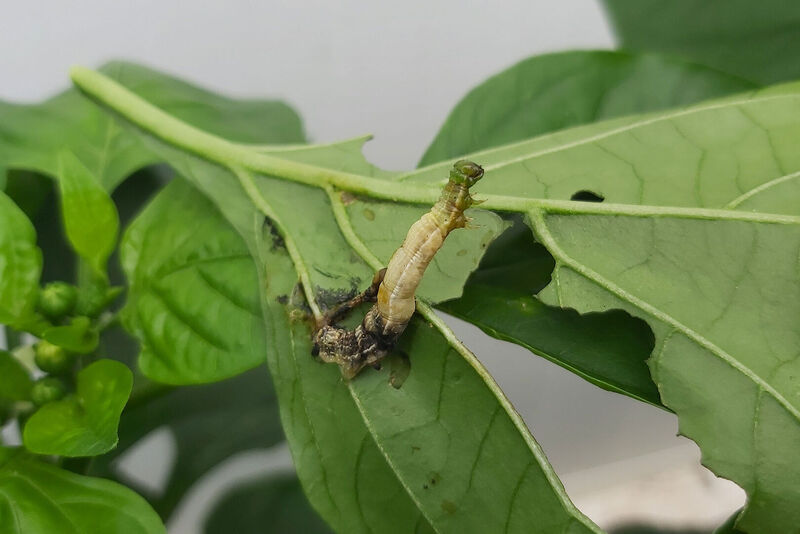Beneficial nematodes; the natural move towards biological crop protection
Butterflies and moths are found all over the world. Their preferred place to reproduce is in protected crops – after all, it’s usually warmer inside than outside. The caterpillars of the butterflies and moths can do a lot of damage to these crops, so effective control depends on early identification. The following are absolute must-knows.
- Most butterfly species that are active during the day have a striking color. The nocturnal moths are often an inconspicuous brown and greyish color.
- Numerous caterpillars are causing problems worldwide. In protected and open-field crops, caterpillars of the following butterflies and moths in particular drive growers to despair: tomato loopers, tomato moth, cabbage moth, army moth, African cotton leafworm, silver Y moth, cotton bollworm, cabbage leaf roller, carnation leaf roller, Duponchelia, box tree moth, banana moth, tomato leaf miner moth, and Paysandisia archon.
- The name of the butterfly or moth doesn’t always tell you everything about the species’ dietary preferences. For example, the cabbage moth also likes tomatoes, sweet peppers, and chrysanthemums. The African cotton leafworm likes tomato, sweet peppers, and beans. And the box tree moth... loves box trees.
- Adult butterflies don’t attack crops; most of them feed on nectar.
- Caterpillars have biting or chewing mouth parts, which allow them to consume large amounts of plant tissue.
- The most harmful caterpillars belong to the Noctuidae family (moths), which is also the largest butterfly family. Most moths in this family are active at night. The caterpillars don’t usually have a lot of hair, and they pupate in the ground.
- Another big cause for concern is the Tortricidae family, known as ‘leaf rollers’ because the caterpillars often live in curled-up leaves. If you touch them, they will start to squirm and drop to the ground along a silk thread.
- Caterpillars grow about ten to twenty times in length in their short lives. Their weight increases two to three thousand times.
- Male butterflies and moths find the females by the pheromones they excrete. Many control methods make good use of this. For example, spreading many pheromones can disorientate the males and leave them unable to locate the females. Another technique is to use the pheromones to lure the butterflies and moths to a trap with a sticky surface or a pool of water.
- In addition to pheromone decoys, there are more biological methods to effectively fight butterflies and moths, such as nematodes and predatory bugs.
